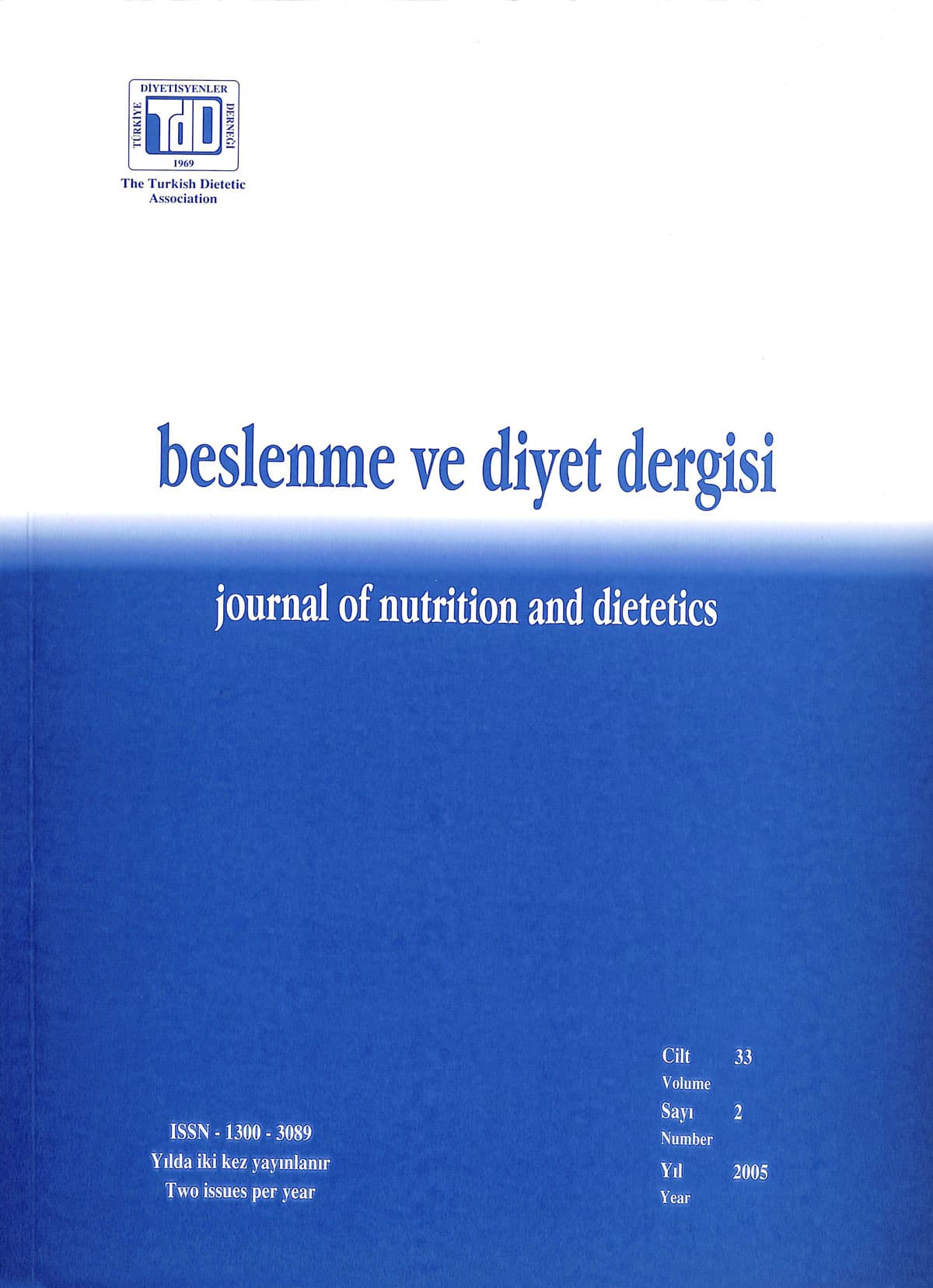Nutritional Status and Eating Habits of Elderly Living at Home and Institution in Ankara
Keywords:
Elderly, eating habits, nutritional statusAbstract
This study was conducted to determine the eating habits and nutritional status o f 391 elderly men and women, aged 65 years old, 189 institutionalized and 202 living at home. A total o f 21.3% o f elderly were living alone. The occurrence o f diseases has more than one was fo u n d higher in institutionalized elderly than home-living elderly (81.5% and 71.8%, respectively). Skipping o f meal w as observed in 18.8% o f institutionalized and 11.1% o f elderly living at home. Breakfast (7 1 .4% ) and lunch (6 0 .5% ) were the m o st skipped meals among institutionalized and noninstitutionalized elderly. Loss o f appetite and ch ewing-swallowing p roblems were observed higher in institution alized elderly (11.6% vs 16.4%, respectively), than elderly living at their homes (5.4% vs 11.4%, respectively). Plate waste was found higher in institutionalized than n o n -institutionalized elderly (29.6%) and 4%, respectively ) . Smoking habits were s im ila r among both the institutionalized and home-living elderly (23.3%and 19.8%, respectively). Mean b ody mass index va lu e s were 2 5 .5 ± 4 .8 an d 29.9±4.9 kg/m2, in men and women living in institutions and 26.9±3.2 ve 29.3±4.8 kg/m2 living at their homes, respectively. Elderly living in institutions had signifıcantly higher mean waist/hip circumference ratio than those living at home (p<0.05). Mid upper arm circumferences were fo u n d similar in both groups o f elderly women, but mean values was found higher in institutionalized than non-institutionalized men (28.6±4.2 w 33.1±5.6 cm, respectively; p< 0.05). Elderly people living independently have a better nutrient intake than those living in institution. Dietary ıntakes o f calcium, vitamin A, carotene, folate, fib e r and cholesterol were higher in elderly living at their homes than institutions (p<0.05). The percentages o f energy and nutrient intakes below 67% o f RDA were found to be higher in institutionalized elderly. Inadequate calcium intake was the fırst sequence in both groups. Total o f 86.8% o f institutionalized and 66.9% o f non-institutionalized elderly were consuming calcium insuffıciently. It may be concluded that, nutritional status o f the elderly should be assessed periodically and diets should be prepared depending on every special situation and to the daily requirements o f each elderly.

